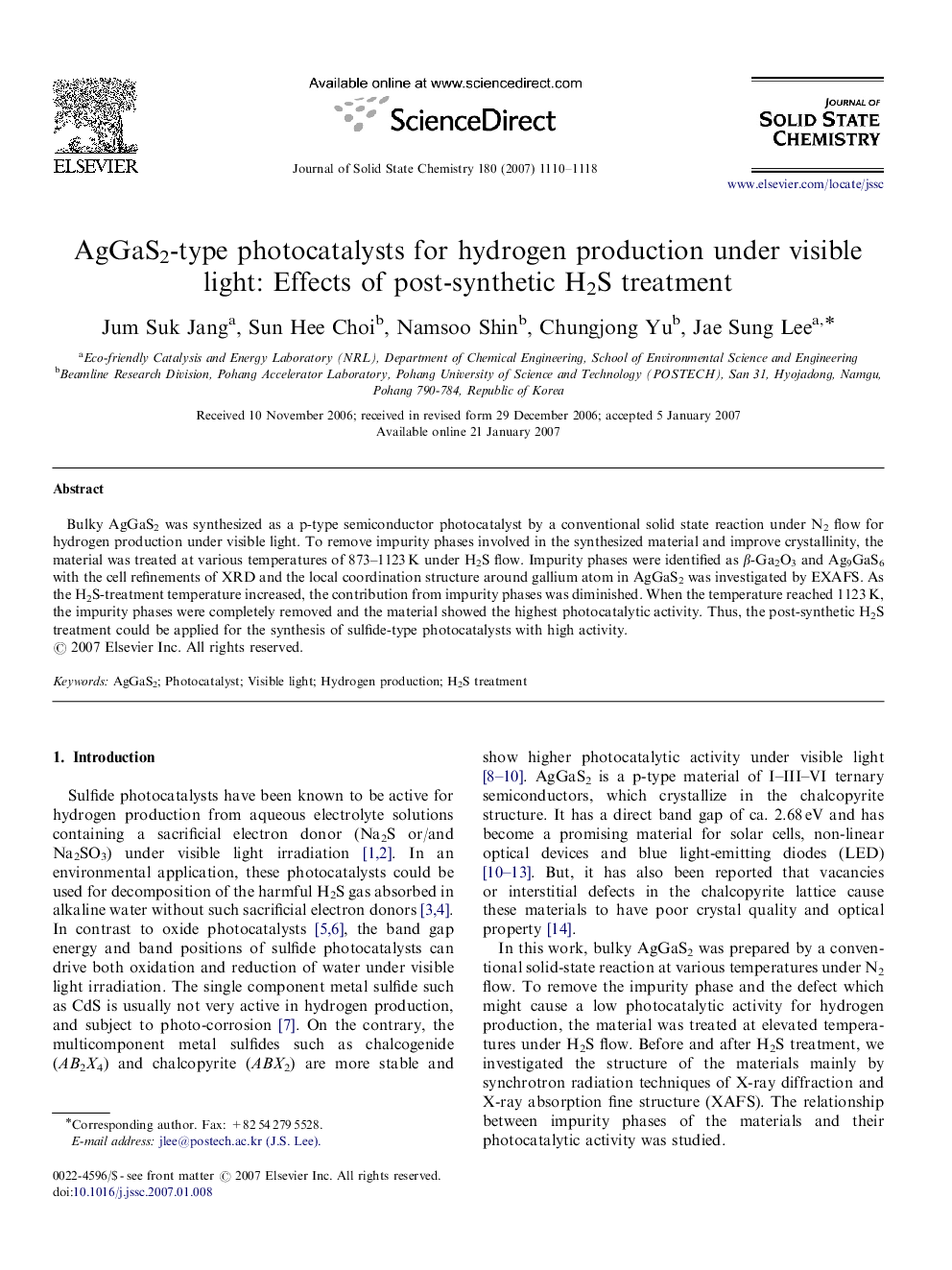| Article ID | Journal | Published Year | Pages | File Type |
|---|---|---|---|---|
| 1333884 | Journal of Solid State Chemistry | 2007 | 9 Pages |
Bulky AgGaS2 was synthesized as a p-type semiconductor photocatalyst by a conventional solid state reaction under N2 flow for hydrogen production under visible light. To remove impurity phases involved in the synthesized material and improve crystallinity, the material was treated at various temperatures of 873–1123 K under H2S flow. Impurity phases were identified as β-Ga2O3 and Ag9GaS6 with the cell refinements of XRD and the local coordination structure around gallium atom in AgGaS2 was investigated by EXAFS. As the H2S-treatment temperature increased, the contribution from impurity phases was diminished. When the temperature reached 1123 K, the impurity phases were completely removed and the material showed the highest photocatalytic activity. Thus, the post-synthetic H2S treatment could be applied for the synthesis of sulfide-type photocatalysts with high activity.
Graphical abstractPost-treatment of AgGaS2 under H2S flow at 1123 K resulted in the well-defined chalcopyrite structure, which was revealed mainly by Rietveld analysis of XRD and detailed EXAFS study. The diameters of AgGaS2 particles treated at 873–1123 K under H2S gas flow are ca. 2–3 nm, almost the same as that of H2S-untreated material. In untreated sample, AgGaS2 particles were surrounded by the broken powders having sharp edges. But there were almost no broken particles and the surface became smoother for AgGaS2 treated with H2S gas at 1123 K. The rates of hydrogen evolution over H2S treated AgGaS2 at higher temperatures (1073 and 1123 K) were higher than those of photocatalysts untreated or treated at lower temperatures (873, 973 K). There is almost no correlation between BET surface areas and hydrogen evolution rates.Figure optionsDownload full-size imageDownload as PowerPoint slide
